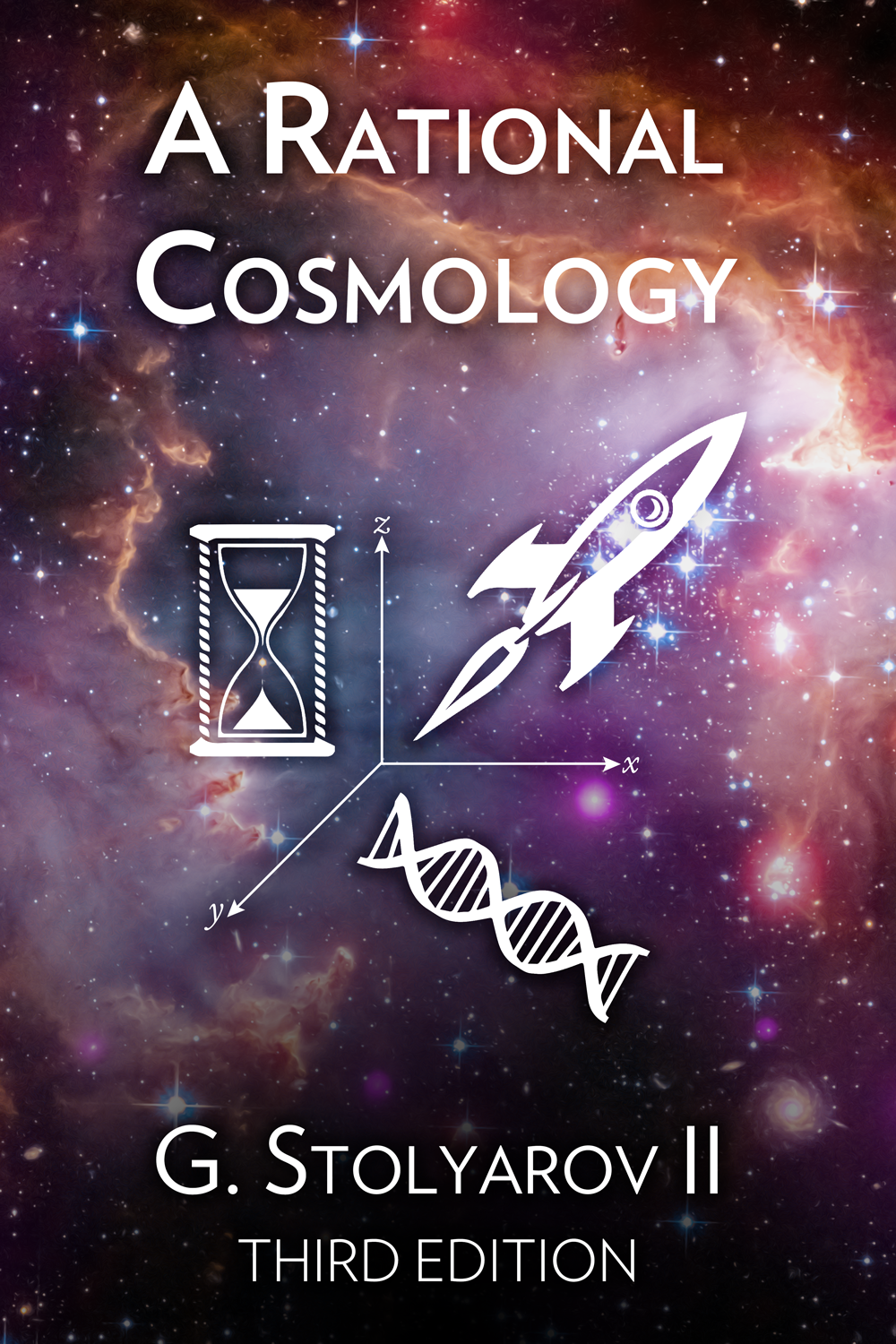The Role of Business and the Virtuous Cycle of Progress in Robert Heinlein’s “Methuselah’s Children” – Article by G. Stolyarov II

Methuselah’s Children is a pioneering science-fiction novel by Robert A. Heinlein, remarkable for its favorable treatment of greatly extended lifespans several decades before the era of biotechnology and the advent of the transhumanist and life-extension movements. Moreover, Methuselah’s Children presents important insights regarding the virtuous cycle of improvement that occurs when a business structure is deliberately oriented toward catalyzing both technological progress and increased length and quality of human life.
Originally published as a series in the July, August, and September 1941 issues of Astounding Science Fiction magazine, Methuselah’s Children was released as a full-fledged novel in 1958. Exceptionally long-lived humans – the members of the Howard Families – are the novel’s protagonists and are portrayed in a favorable light, as the novel chronicles their escape from persecution in a society where most people continue to live lives of conventional duration and falsely believe the Howard Families to possess a means to artificially engineer extended lifespans. In fact, the Howard Families’ exceptional longevity is genetic – a legacy of generations of selective breeding.
The Howard Families’ origin dates to the 19th century and is made possible by the success of a businessman who dreamed of overcoming death:
Ira Howard, whose fortune established the Howard Foundation, was born in 1825 and died in 1873 – of old age. He sold groceries to the Forty-niners in San Francisco, became a wholesale sutler in the American War of the Secession, multiplied his fortune during the tragic Reconstruction. Howard was deathly afraid of dying. He hired the best doctors of his time to prolong his life. Nevertheless old age plucked him when most men are still young. But his will commanded that his money be used to lengthen human life. The administrators of the trust found no way to carry out his wishes other than by seeking out persons whose family trees showed congenital predispositions toward long life and then inducing them to reproduce in kind. Their method anticipated the work of Burbank; they may or may not have known of the illuminating researches of the Monk Gregor Mendel. (Heinlein 1958, 141)
Ira Howard applied his business fortune and business expertise to create a foundation and trust for the purpose of lengthening human life, enabling a small fraction of humankind to become supercentenarians over the course of generations. Officially, the Howard Foundation is “an openly chartered non-profit corporation” (Heinlein 1958, 6). The Foundation’s strategy is to provide financial support and a strong social network for its beneficiaries, while avoiding public notice and adhering to the legal constraints of the eras through which the Foundation prevails. In a conversation in 1874 with medical student and future beneficiary Ira Johnson, a lawyer for the Foundation explains that, in order to avoid legal prohibitions, the Foundation does not form official contracts with those whom it supports:
No, no, such a contract would be void, against public policy. We are simply informing you, as administrators of a trust, that should it come about that you do marry one of the young ladies on this list it would then be our pleasant duty to endow each child of such a union according to the scale here set forth. But there would be no Contract with us involved, nor is there any ‘proposition’ being made to you – and we certainly do not urge any course of action on you. We are simply informing you of certain facts. (Heinlein 1958, 6)
Methuselah’s Children is set on Earth during the 22nd century, in the largely peaceful and rights-respecting society of The Covenant. Generations of selective breeding by that time had, by then, raised the life expectancy of members of the Howard Families past 150 years. The Howard Families had hitherto kept their existence a secret from the broader population through periodic reinventions of individual members’ public identities, an effort in which the Foundation was instrumental:
Two courses of action were adopted: the assets of the Foundation were converted into real wealth and distributed widely among members of the Families to be held by them as owners-of-record; and the so-called ‘Masquerade’ was adopted as a permanent policy. Means were found to simulate the death of any member of the Families who lived to a socially embarrassing age and to provide him with a new identity in another part of the country. (Heinlein 1958, 8)
During the more tolerant era of The Covenant, the Howard Families decide to attempt a gradual disclosure of their exceptional lifespans. Part of the motivation is to benefit the progress of humankind, as explained by Foundation trustee Justin Foote: “the Families as a group had learned many things through our researches in the bio-sciences, things which could be of great benefit to our poor short-lived brethren. We needed freedom to help them.” (Heinlein 1958, 9)
The Howard Families decide to reveal 10 percent of their membership and observe the reaction, but their estimation of their fellow humans’ tolerance is far too generous. Their plan backfires: the general public becomes falsely convinced that the Howard Families possess a biotechnological secret that could rejuvenate anyone and are withholding it from the remainder of humanity. All of the civil liberties afforded by The Covenant fall by the wayside as the masses clamor for the Howard Families to be detained so that their secret could be extracted from them by force.
Administrator Slayton Ford, who is sympathetic to the Howard Families, nonetheless feels compelled to authorize their arrest due to public pressure, while secretly assisting with the Families’ plan to escape to another world. This plan is the brainchild of Lazarus Long – a member of the Families and a recurring Heinlein protagonist memorable for his inventiveness, wit, practicality, and self-reliance. Lazarus Long – named Woodrow Wilson Smith at birth – is a space adventurer and rugged individualist who has stayed away from the Families but reveals himself to be their oldest member at an age of at least 241 years. By the rules of the Foundation, which reward longevity with authority, this gives him a leadership position. Lazarus manages to sway the initially reluctant membership of the Families with the rhetorical assistance of more forward-thinking trustees such as Zaccur Barstow. Barstow points out that it is precisely because of the Families’ accumulated wealth and ability to use business and commerce to their advantage that Lazarus’s plan might succeed:
“[T]here is an appropriateness in the long-lived exploring the stars. A mystic might call it our true vocation.” He pondered. “As for the ship Lazarus suggested; perhaps they will not let us have that … but the Families are rich. If we need a starship – or ships – we can build them, we can pay for them. I think we had better hope that they will let us do this … for it may be that there is no way, not another way of any sort, out of our dilemma which does not include our own extermination.” (Heinlein 1958, 47)
The wealth accumulated through Ira Howard’s business and preserved over the course of centuries enables the Howard Families to purchase the small spaceship Chili, which becomes an instrument to take control of the larger ship New Frontiers with Administrator Ford’s clandestine assistance. An interesting conversation regarding the economic effects of longer lifespans occurs between Lazarus and Joseph McFee, who sells him the Chili. McFee posits that uncertainty about the cause of the Howard Families’ longevity has resulted in a disruption to many individuals’ ability to engage in economic planning:
“Never saw such a dull market. Some days you can’t turn an honest credit.” McFee frowned. “You know what the trouble is? Well, I’ll tell you-it’s this Howard Families commotion. Nobody wants to risk any money until he knows where he stands. How can a man make plans when he doesn’t know whether to plan for ten years or a hundred? You mark my words: if the administration manages to sweat the secret loose from those babies, you’ll see the biggest boom in long-term investments ever. But if not well, long-term holdings won’t be worth a peso a dozen and there will be an eat-drink-and-be-merry craze that will make the Reconstruction look like a tea party.” (Heinlein 1958, 72-73)
Through McFee, Heinlein illustrates an important insight regarding the impact of lifespan-related expectations on economic behavior. Longer anticipated lifespans extend people’s time horizons and render them more willing to undertake long-term projects and investments, out of the recognition of a high probability of personal benefit from such undertakings. On the other hand, anticipation of short lives and imminent mortality engenders a “live for today” attitude where prudent, long-term planning falls by the wayside, and actions that sustain and drive forward human civilization are neglected. Longer lifespans tend to result in a lower rate of time preference – the degree by which present satisfactions are preferred to future satisfactions.[1] With longer time horizons available to people, remoter future satisfactions can be conceived of and worked toward. Such work generates numerous ancillary benefits along the way for oneself and others – in terms of both material well-being and cultivation of the virtues and habits conducive to an actualized, fulfilling life. Therefore, extending human lifespans ought to bring about more businesses that focus on long-term human well-being and are comfortable with realizing profits over many decades or centuries, whereas short lifespans drive a mentality of focusing on immediate profits only, without regard for longer-term consequences of business decisions.
Through the engineering and navigational abilities of Andrew “Slipstick” Libby, another member of the Howard Families, the long-lived protagonists manage to use faster-than-light travel to escape the Solar System together with Administrator Ford, who defects to them at the last moment. While the Howard Foundation made the Families’ exodus possible, it also rendered itself obsolete in the process. Once the Families are underway on their journey, Justin Foote explains the need for a new decision-making structure to emerge:
I am able to say without bias that the trustees, as an organized group, can have no jurisdiction because legally they no longer exist. […] [T]he board of trustees were the custodians of a foundation which existed as a part of and in relation to a society. The trustees were never a government; their sole duties had to do with relations between the Families and the rest of that society. With the ending of relationship between the Families and terrestrial society, the board of trustees, ipso facto, ceases to exist. It is one with history. Now we in this ship are not yet a society, we are an anarchistic group. This present assemblage has as much – or as little – authority to initiate a society as has any part group. (Heinlein 1958, 99)
From its formation to its dissolution, the Howard Foundation embodies some of the noblest and most admirable qualities possible for a business structure. It prioritizes its mission of promoting longer lifespans and the well-being of its members over its structural survival as an organization. It acts genuinely to protect and empower its beneficiaries – the Howard Families – enabling them to transcend the need for the Foundation’s existence and to form a new organizational structure. The Howard Families utilize Ford’s administrative skills to coordinate the effort of the New Frontiers’ interstellar journey and the formation of colonies on two successive planets, where the Howard Families coexist with two friendly but utterly non-individualistic species – the Jockaira and the Little People. In most respects apart from coordinating the logistics of the voyage and the initial settlement phase, the new administration adopts a hands-off, libertarian approach toward the colonists’ time allocation and life choices – enabling many of the settlers to lead lives of ease and leisure on the second world of the Little People, where there are abundant resources for all. However, Lazarus cannot accept this as a permanent condition, as his human ambition and desire for challenge are not fulfilled. Furthermore, even though they possess exceptional longevity, members of the Howard Families are still mortal and still face the prospect of losing their individual existences either through death or through voluntary sublimation into the group-mind structures of the Little People – which still destroys individual personality and self-awareness. Lazarus convinces the majority of the settlers that, in order to strive for more than contentment and to have the potential to achieve further progress, they must endeavor to return to Earth.
On Earth, 75 years have passed since the Howard Families’ exodus. Human society has become far more enlightened in the meantime, and the Howard Families are no longer perceived as public enemies to be persecuted, but rather as admirable early pioneers in life extension and interstellar exploration. Driven by the impression that there was a “secret” to super-longevity, human scientists independently achieved through biotechnology the same results that the Howard Families attained through selective breeding. In a society where everyone possesses life expectancies of over a century and a half, the Howard Families cease to be outliers or targets for envy and suspicion. Ultimately, Ira Howard’s plan to greatly lengthen human lifespans is realized for the entirety of humankind. The Howard Foundation’s efforts led the remainder of humanity to view super-longevity to be attainable for all. This perception motivated massive research efforts to this goal after the Howard Families’ exodus. This result illustrates the ability of a business organization oriented toward human progress to achieve transformation of the wider society, even if explicitly focused on a much narrower subset thereof. A businessman who seeks to catalyze technological progress and create a better future can achieve a wider scope of success by setting an example of what is possible and inspiring others to pursue similar outcomes.
Upon returning to Earth, Lazarus Long and Andrew Libby discuss business plans to explore further reaches of the galaxy – facilitating the expansion of human settlement there – while enabling Lazarus and Libby to lead an enjoyable lifestyle free of significant material limitations:
“Somebody is going to have to do a little exploring before any large-scale emigration starts. Let’s go into the real estate business, Andy. We’ll stake out this corner of the Galaxy and see what it has to offer.”
Libby scratched his nose and thought about it. “Sounds all right, I guess after I pay a visit home.”
“There’s no rush. I’ll find a nice, clean little yacht, about ten thousand tons and we’ll refit with your drive.”
“What’ll we use for money?”
“We’ll have money. I’ll set up a parent corporation, while I’m about it, with a loose enough charter to let us do anything we want to do. There will be daughter corporations for various purposes and we’ll unload the minor interest in each… Then-“
“You make it sound like work, Lazarus. I thought it was going to be fun.”
“Shucks, we won’t fuss with that stuff. I’ll collar somebody to run the home office and worry about the books and the legal end-somebody about like Justin. Maybe Justin himself.”
“Well, all right then.”
“You and I will rampage around and see what there is to be seen. It’ll be fun, all right.” (Heinlein 1958, 181)
What leads Lazarus to formulate such a far-reaching vision – in terms of both space and time – for a combination of business and unending personal adventure? It is precisely the emerging ability, at the novel’s conclusion, of human scientists to artificially extend lifespans even beyond the Howard Families’ typical life expectancies. Lazarus remarks, “I didn’t start planning our real estate venture till I heard about this new process. It gave me a new perspective. I find myself thinking about thousands of years – and I never used to worry about anything further ahead than a week from next Wednesday” (Heinlein 1958, 182). Here, too, Heinlein illustrates the tremendous incentive that lengthened lifespans provide for long-term thinking and planning, enabling people to accomplish, experience, and create on a grand scale instead of remaining mired in the immediately accessible.
Methuselah’s Children offers an insightful vision of the positive feedback loop between progress-oriented business structures and the attainment of longer, better lives. Through establishing the Howard Foundation, Ira Howard set in motion a chain of events that resulted in super-longevity for all humans and ambitious efforts at interstellar exploration and colonization. The fruits of this effort – incentives for long-term thinking – motivate Lazarus Long to initiate business ventures of his own for the purpose of pushing further outward the boundaries of human ability and expansion. Heinlein concludes the novel with Lazarus’s statement of unending ambition: “Yes, maybe [the universe is] just one colossal big joke, with no point to it. […] But I can tell you this, Andy, whatever the answers are, here’s one monkey that’s going to keep on climbing, and looking around him to see what he can see, as long as the tree holds out” (Heinlein 1958, 183). This never-ending aspiration for discovery and improvement ought to motivate real-world businesspeople and humans in general to continually seek out ways in which they can apply their skill sets to expand the boundaries of possibility in any endeavor that advances human well-being.
References
Heinlein, Robert A. 1958. Methuselah’s Children. New York: Baen.
Stolyarov II, G. 2005. “Austrian Economics and Time Preference”. The Rational Argumentator, Issue XLII. Available at http://rationalargumentator.com/issue42/austriantimepreference.html. Accessed December 11, 2014.
Notes
[1] The concept of time preference was extensively elucidated by the renowned Austrian economist Ludwig von Mises (1881-1973). For a concise overview of this idea, see “Austrian Economics and Time Preference” (Stolyarov 2005).


